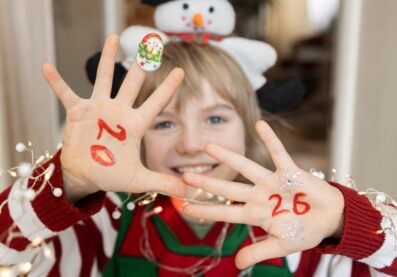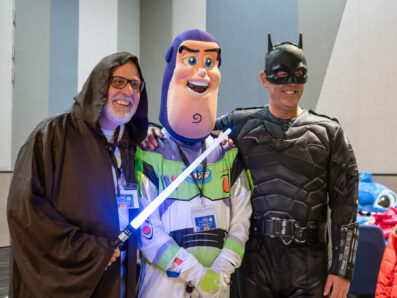Let’s explore why some children in care might communicate differently, and how learning to sign with your foster child can aid in healthy, open communication between children and families.
Why are some children non-verbal?
There are many reasons why a child in care might use non-verbal communication instead of speaking aloud, or to support their speech and language development. These include:
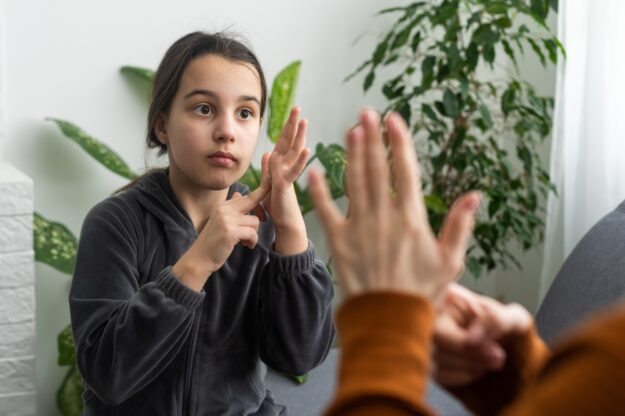
- Developmental delays. Most children will say their first word around the time of their first birthday. Many children living in care have experienced complex developmental trauma, which can have a big impact on when a child hits traditional milestones. If a child isn’t talking around the age we would expect, this is known as a speech delay. Non-verbal communication methods, such as sign and PECS, can support children through this transition.
- Physical or neurological factors. Living with a physical disability which impacts hearing or speech, having a learning disability such as Down’s Syndrome or a neurological condition such as Autism can also mean that a child communicates differently. Autism presents in different ways— many Autistic people are fully verbal, some are non-verbal and others experience situational mutism.
- Trauma and anxiety-related issues. Some children in care live with reactive mutism as a response to traumatic events. Other children may experience selective mutism, a phobia of talking, when they feel anxious or comfortable. Selective mutism is particularly common in young children and children who have recently moved to a new country, such as sanctuary-seeking children.
How can learning sign help a non-verbal child?
For children who communicate differently, having access to communication aids such as Makaton sign language or tools like Now and Next boards can have tons of benefits. These tools help children to express themselves, make their own choices and have their needs met.
Alternative communication methods can also help in establishing routines and removing the frustration which a child may feel if they are not being fully understood. Having wider options for communication supports children’s quality of life and relationships, as well as supporting positive behaviour.
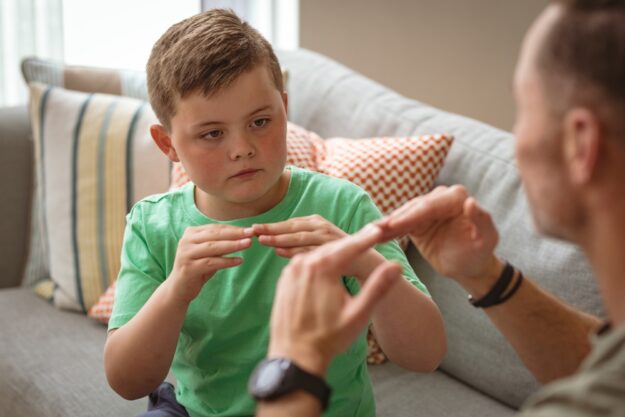
What is Makaton communication?
Makaton sign language is a form of sign which, when combined with symbols and speech, can be a huge help to people who face challenges in communicating. Makaton is mostly used with children but has been a huge help to people of all ages across the UK, including people who have suffered a stroke and those living with Alzheimer’s. It’s also used to support preverbal children— you can even attend Makaton classes for babies!
What is the difference between BSL and Makaton?
British Sign Language (BSL) is the most commonly used form of sign here in the UK, developed by and for the deaf community. Makaton is a simplified form of sign based on BSL which follows a multi-modal approach by introducing picture symbols and verbal cues to aid in children’s understanding.
When you perform a Makaton sign, you also say the word aloud and should use your facial expressions and tone of voice to help convey the meaning behind what you’re communicating. This varied sensory input helps children to better understand what’s being communicated to them, as well as supporting the development of their own communication skills.
How can I learn Makaton sign language?
-
-
Start small.
If you think learning Makaton or another form of sign might be helpful in aiding your foster child to communicate, one tip is to start off by teaching yourself and your foster child a motivating sign. This means learning Makaton signs for something they enjoy and frequently ask for, such as a favourite snack or toy.
The amount of time it will take to learn a sign differs from child to child, and starting off by learning the signs for the things they love is a great way to kick start your family’s learning. Simple signs for basic needs like sleep, using the bathroom and grabbing a drink can also come in very handy day-to-day.
-
Use online resources.
There are lots of free resources which you can use to learn Makaton signs with your foster child. A simple google image search will help you to learn basic Makaton signs, and there is lots of media dedicated to learning Makaton in a fun and engaging way.
You may have already come across Makaton on Mr Tumble’s TV show, ‘Something Special’, or featured on the popular CBeebies’ segment ‘Bedtime Stories,’ both of which are available for free on BBC iPlayer. We’d also recommend checking out Singing Hands,hosted by registered Makaton tutors Suzanne Miell-Ingram and Tracy Upton, a fantastic YouTube channel creating Makaton-centred content.
-
Attend a class.
If you’re interested in taking your skills even further, you could sign up for a local Makaton class. Makaton is a registered charity here in the UK, offering a variety of courses at reduced rates for caregivers. You can also download a range of free resources by signing up for a free account on Makaton’s website.
-
Will learning sign language delay my child’s speech?
Some foster parents worry that if they teach their foster child to sign, they may never transition into verbal speech. The truth is, using Makaton as a communication aid actually encourages children to verbalise, due to its multi-modal approach which encourages those who can to speak aloud while signing— it’s a very chatty form of sign!
The more we learn to communicate, the more we want to communicate. When children begin to pick up new signs and words, it opens up whole new world to them and can help to build their confidence. Many children with the ability to speak will naturally begin to prefer verbal communication over time, though this will differ from child to child.
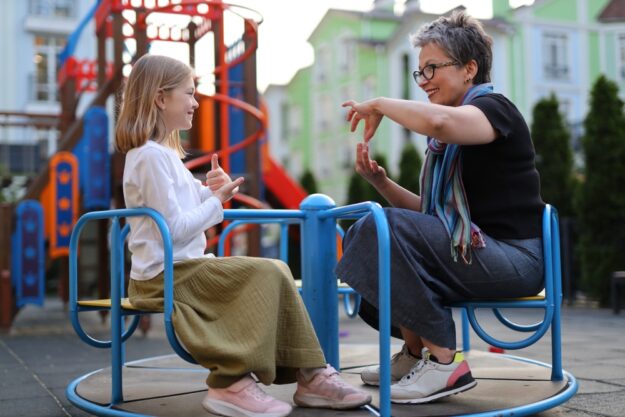
Additional communication methods for non-verbal children
While Makaton and BSL are two of the most widely recognised methods of non-verbal communication here in the UK, there are many alternative communication tools designed to suit different children’s needs. Some more methods which may be of use to the children in your care include:
- Signalong is an alternative signing method for children with communication difficulties which is also based on BSL. It’s very similar to Makaton, and also enables users to create their own signs.
- PECS is a communication method based on pictures, which encourages children to exchange picture cards for things they want— for example, if a child wanted a glass of squash, they would offer a picture of a drink to their caregiver to communicate that need.
- Widgit is a symbol-based language which can support children’s communication and their understanding of emotions through the creation of timetables and other resources. It’s widely used in schools which accommodate for children with special educational needs.
- Go-talk devices are small handheld communication aids featuring images. When a child presses a picture, words or phrases associated with that picture will play aloud.
Interested in finding out more? Learn more about how to communicate with non-verbal children.
Support for foster parents at FCA
Here at FCA we offer a huge range of support tailored to foster parents caring for a child with additional needs. These include:
- In-depth training on topics including trauma and neurodiversity
- A generous fostering allowance to cater for your needs and the needs of the children you’ll care for
- Our free autism support pack and support tailored to children’s needs
Could you foster a child with additional needs?
Since the Covid-19 pandemic, there has been a steady decline in the amount of foster parents in the UK. The recent drop in foster parents particularly effects children with disabilities, who often struggle to find foster homes able to accommodate their unique needs.
Children with additional needs are also likely to remain in care for longer than other children. If you believe that you could welcome a child into your home, get in touch with our team today to learn more about fostering with FCA— you can rely on our support every step of the way.
